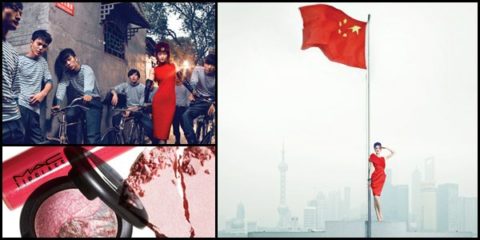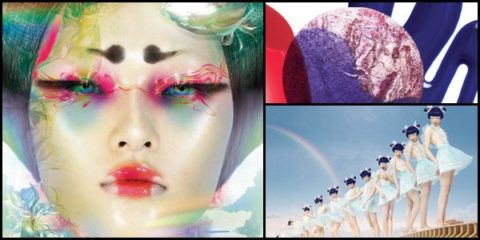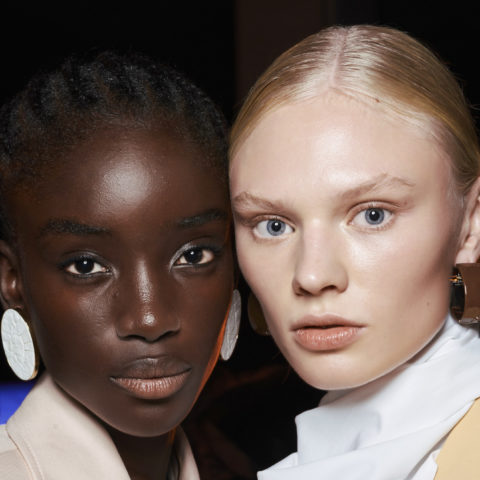Culture Shock: Photographer Chen Man’s boundary-pushing imagery make their way into a M.A.C collaboration

“Those girls started riots, because Chinese people thought they were ugly,” says Phillip Ing, vice-president of global retail and special events for M.A.C. He’s describing the public’s reaction to a series of images by Beijing-based photographer Chen Man, published in 2003 on the covers of Vision, an avant-garde Chinese fashion and art magazine. OK, so they weren’t actual riots, but there was plenty of hate mail; resistance is a common repercussion when one is blazing a beauty trail in a conservative country. Her images were arresting and fantastical, and they instantly garnered attention, as did the artist herself. At the time, she was only 23 and still in school, but she represented the next generation, who no longer felt constrained by many of the limitations their nation imposed.
Continue reading about Chen Man »
View the gallery »
Chen Man was attempting to bring “a new kind of Chinese beauty” to her homeland, says Ing, but many locals found it offensive. For centuries, the standardized Chinese beauty ideal—pale skin, a high nose, small lips and large eyes—has been coveted. This look was commonplace in the media, so it was unthinkable that anyone without these features would be seen as attractive, let alone showcased on a magazine cover. So when she photographed girls with big lips and small eyes, “she blew that out of the water,” says Ing. “[The mainstream] rejected it because it was from the countryside and wasn’t a Shanghai girl look.” She also deliberately juxtaposed Eastern and Western elements, shooting a model with a boom box on her shoulder on the Great Wall of China. While such images might seem a dime a dozen to North American eyes, in a Communist country where Facebook and Twitter are forbidden—even now—it’s provocative, to say the least.
After seeing the photographer’s work on a visit to China in 2005, Ing brought her to M.A.C’s attention. He was struck by her creative use of colour and lighting; her female subjects, and how they were portrayed, resonated with him. “If there was one thing in her photos that I thought was noticeable, it was how strong the girls looked,” he says. “I think that’s amazing because usually the girls were soft and feminine…and looked passive.”
The images are characterized by post-production effects, such as Photoshop and digital enhancement, and often employ strikingly audacious makeup. So when M.A.C asked Chen Man to collaborate on a makeup collection, she agreed. “There is a synergy between what I do and the M.A.C brand,” she explains through a translator at a press conference in Beijing. “We both focus on creation and reinvention and are both focused on the face. For me, it is the most important thing to look at when I am working.”
Continue reading about Chen Man »

When it came to conceiving the 18-piece collection (from $18, maccosmetics.com), the photographer had a clear concept. Firstly, she wanted to work with shades of pink (to symbolize love) and blue (to illustrate water). “My vision was to express life through colour,” she says. “The idea of love and water symbolizes life. Both are essential.” She also requested specific textures—creamy for lips, soft for eyes—as well as a yin-yang design on the eyeshadows. In short, the makeup embodies the qualities that are reflected in her shots: strong mouths paired with sheer eyes.
“She brings a particular mood in beauty,” says Terry Barber, M.A.C’s director of makeup artistry. Hired to do the makeup for the ad campaign, he compares Chen Man to legendary photographers such as Helmut Newton and Guy Bourdin in that they all have a recognizable, signature style. “It’s the same with her. What she connects to through the lens of the camera has to be exactly how she likes it,” he says. “She plays a lot with light and with bright colour in a very specific way.”
Beauty marks—sometimes dots below the eyes or elsewhere on the face—also “add an extra dimension to the makeup,” says Barber. The creative techniques Chen Man uses, such as highlights to achieve a 3-D effect, also emphasize her subjects’ uniqueness, rather than downplay it. “She plays with this vertical line of light that goes through the eye, and it actually pushes the ethnicity,” says Barber. “She’s created beauty imagery that is so stunning and she’s exploded a lot of stereotypes of Asian beauty—that it shouldn’t be mannequin-like, demure and just perfect.”
The Chen Man M.A.C collection launches March 1, 2012








